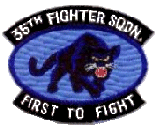Christmas Leave
by Joe Boyles
On occasion, I write an article about my past that is related to the life of military men and women. That’s what this story is about – more than four decades ago on my first operational assignment. I was on a remote tour without my family, half a world away in South Korea. I was only 23 years old and kind of bummed about being away from my young wife and baby daughter.
My assignment would last for 13 months, but (saving grace) I would be allowed to take a 30-day leave during the assignment between the fourth and ninth month. Linda and I carefully planned this before I left her behind in Florida that I would do my best to be home for Christmas.
I left Tampa on March 10, 1972. As I recall, I traveled by commercial air to Minneapolis then Seattle; caught a bus to McChord AFB near Tacoma and boarded a military contract flight through Alaska, to Japan and then into Korea. It was a long, exhausting trip, but … when you’re young, you can put up with almost anything.
I arrived at my new home at Kunsan AB, Korea, and was assigned a room in our squadron dormitory. I immediately went to sleep. It was the weekend, so I had a good opportunity to rest.
So Monday morning, I’m refreshed and make my way down the flightline to the south end of “the Kun” and to the operations building of the 35th Tactical Fighter Squadron “Panthers.” I spent the next hour or so walking through the building introducing myself to some fifty aviators who were my new squadron mates. Since I’m the ‘new guy,’ it is incumbent on me to introduce myself.
At some point, I find my way to the office of my Operations (Ops) Officer, Lieutenant Colonel Bill Mickelson. The Ops Officer is the number two fellow in a fighter squadron, backing up the commander. Colonel Mickelson was well liked – the lieutenants referred to him as “Uncle Bill.”
After a couple of minutes of chit-chat, I get to my point: “I’d like to apply for my mid-tour leave.” Uncle Bill gives me a quizzical look and then breaks into a grin: “You’re getting a little ahead of yourself young fella since this is your first day on the job.” “Yes sir,” I reply, “but I want to ask for the date now before others do later.” He repiles, “Okay, I’ll bite: when do you want to go on leave?”
I request to take leave from December 10 to January 9. Now, if you do the arithmetic, you’ll see that my request fit to the back end of the eligibility period. Colonel Mickelson duly noted my legitimate request and booted me out of his office with the admonition, “go to work.”
Now, fast forward seven months or so: it is mid-October 1972. The 35th TFS has been in Southeast Asia nearly the whole time, flying and fighting. Our period of temporary duty is finished and we have arrived back at Kunsan-by-the Sea. I’m now one of the ‘old heads.’ Well over half the squadron has turned over. Colonel Mickelson has moved on; his successor has as well; and my new Ops Officer is John “WC” Keating.
We’re in a squadron meeting and WC says, “A lot of you guys want to go on leave back to the States to see your families over Christmas, and obviously, I can’t let everyone leave during that period, because we have a mission to accomplish here. So those of you who want to do that, come see me today in my office and we’ll get this figured out.”
I’m standing in line outside the Ops Officer’s office and then it is my turn: “Okay Boyles, you want to go on leave over Christmas, right.” “Yes sir, I do.” “Did you ask either Colonel Mickelson or Major Lueders for this before?” Yes sir I did.” “When did you request leave for the Christmas period?” Deep breath: “I asked Colonel Mickelson for Christmas leave on my first day in the squadron, March 13th.”
Needless to say, I had the earliest request for leave of anyone who met with WC that day – and I got it! My foresight and temerity had paid off. In actuality, those of us who had been a Panther for that long got to go on leave over the Christmas period. After all, we were at the end of our eligibility period.
Leave is an important time for military families to reconnect. The separation has led to growing apart; now they must find a way to reunite and become an integral family again. In looking back over a 27-year career, while I missed many birthdays, anniversaries, and other holidays, I was with my family for every Christmas but one. For that, I am grateful.
